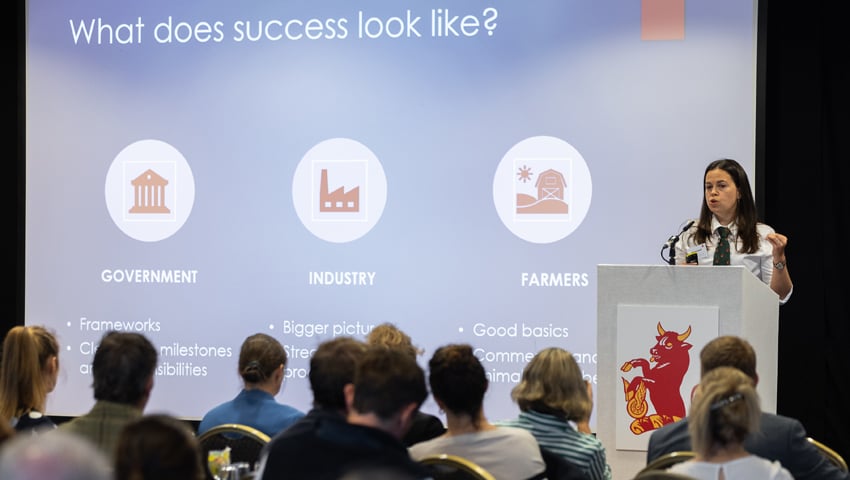Oxfordshire-based vet, Liz Cresswell NSch 2022, has published her Nuffield Farming report entitled, ‘Cattle health schemes: what does success look like?’, sponsored by the Central Region Farmers Trust.
As part of her Scholarship, Cresswell travelled to Scotland, Holland, France, Belgium, Denmark, Zimbabwe, South Africa, Ireland, New Zealand, and Norway. She explored how cattle health schemes are used to control disease, identifying what makes a successful scheme and how this could be applied in the UK.
“There are a wide variety of cattle health schemes used throughout the world to prevent, control and eradicate disease in beef and dairy operations, and to identify herd disease status which have been applied with varying degrees of success,” Cresswell says in her report.
Cresswell believes that while cattle health schemes are important, they shouldn’t be relied on as the only way to achieve high herd health and a cohesive strategy is needed to achieve disease control. She said, “Ensuring that the basics of animal health – suitable environment, adequate nutrition, the right animals for the system and preventative disease measures – are done well goes a long way towards reducing the impact of cattle disease.”
She also notes that the definition of ‘success’ can vary based on different stakeholder perspectives. She said, “There are financial, commercial, personal, social and environmental factors involved in making decisions around animal health. Incorporating them into decision-making around cattle health schemes can help to embed animal health into holistic solutions for farm businesses.
“Frameworks can help to provide roadmaps for controlling disease, but an adaptive, flexible process will help to facilitate successful outcomes; ‘one size’ does not always ‘fit all’ and excessive bureaucracy can be counter-productive. Regular communication can help to expedite success and collaboration is aided where partnerships exist.”
Cresswell also identifies that technology and data could have a role to play in creating successful cattle health schemes. “They provide excellent opportunities to reduce administrative burdens as well as both improve and demonstrate improvements to cattle health, building transparency and trust in protein production which is needed for farming’s societal acceptance and public approval.”
Study objectives
- Understand how cattle health schemes are used to control and eradicate livestock diseases in other countries, and why some diseases are prioritised over others.
- Identify factors which have contributed to successful cattle health schemes and which ingredients we could apply to achieve the same success in the UK.
- Examine disease control in other species to establish what the cattle industry can learn.
Key Messages
- There are many reasons for participation in cattle health schemes, reaching beyond the primary aim of improving cattle health.
- Cattle health schemes play a pivotal role in driving up animal health standards but are only part of the picture of achieving high herd health.
- ‘Success’ looks different depending on the perspective of the stakeholder; identifying cost-benefits to different stakeholders helps to facilitate overall success.
- Regular communication of clear frameworks which identify the aims, milestones and responsibilities of the scheme help with any adaptation which may be needed along the way.
- Regulation associated with cattle health schemes can be burdensome. Data and technology can help to provide transparency and streamline processes.
Image: Liz Cresswell NSch 2022 presented her findings at the 2023 Nuffield Farming Conference in Exeter
